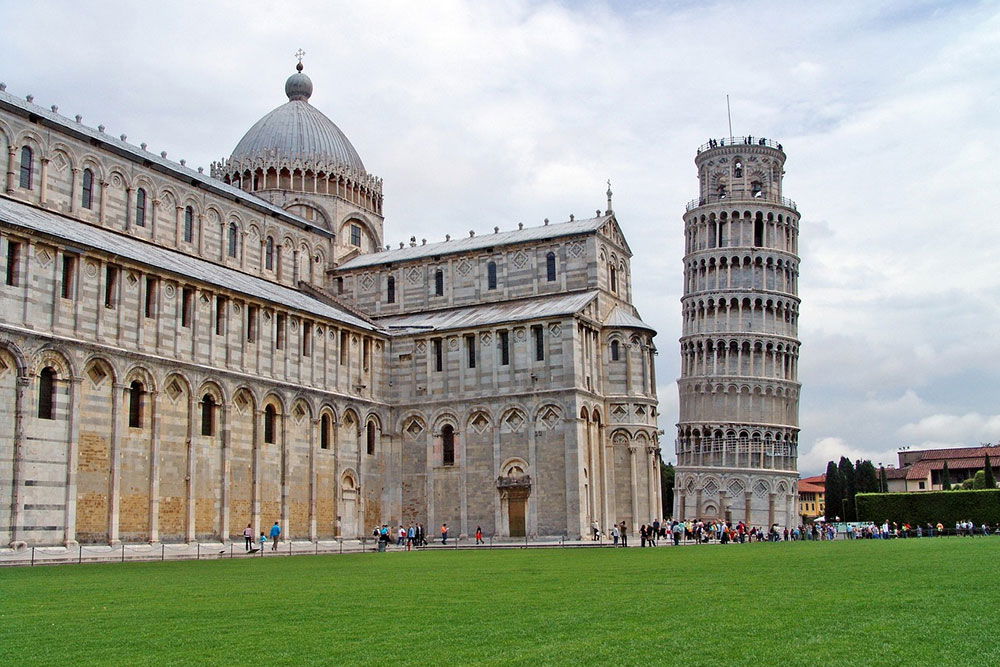
Known around the world for its iconic Leaning Tower, Pisa is one of Tuscany’s most visited cities, but also one of its most misunderstood. While thousands flock to take the quintessential photo of the tower, few venture beyond the famous Piazza dei Miracoli, missing out on the vibrant life, rich history, and cultural treasures this city has to offer.
Set along the tranquil banks of the Arno River, Pisa is a university town, an architectural jewel, and a cultural crossroad with stories reaching back to the Etruscans. Beyond the tower lies a real Tuscan city full of surprises, waiting to be explored.
Though it lies inland today, Pisa was once one of the most powerful maritime republics of the Mediterranean, rivaling Venice and Genoa. Its navy ruled the seas in the 11th and 12th centuries, and the city grew wealthy through trade, exploration, and conquest.
This golden age funded a surge in artistic and architectural development, resulting in Pisa’s grand Romanesque churches, marble façades, and monuments. Today, traces of its seafaring legacy live on in the city’s palaces, porticoes, and in the very spirit of its people.
At the heart of Pisa’s fame is the Piazza dei Miracoli (Square of Miracles), a UNESCO World Heritage Site that houses four extraordinary monuments:
Built as the bell tower for the adjacent cathedral, the tower began to tilt just years after construction started in 1173 due to unstable soil. Today, after major restoration, it stands safely tilted at about 4 degrees and welcomes thousands of visitors daily who climb its spiraling staircase for views over Pisa.
A masterpiece of Pisan Romanesque architecture, the cathedral showcases striped marble, bronze doors, mosaics, and artworks by master artists, including Cimabue.
The largest baptistery in Italy, this round structure is renowned for its acoustics and unique blend of Romanesque and Gothic styles. Its pulpit, sculpted by Nicola Pisano, is a milestone in Italian sculpture.
This monumental cemetery, lined with ancient sarcophagi and frescoes, is said to contain soil brought from the Holy Land during the Crusades.
While the Piazza dei Miracoli is awe-inspiring, Pisa’s true character comes alive in its historic neighborhoods, riverbanks, and local hangouts. Here are just a few highlights that reveal the city’s deeper charm:
This elegant shopping street, flanked by medieval arcades, is full of boutiques, cafés, and historic buildings. It’s also near the birthplace of Galileo Galilei, Pisa’s most famous son.
A lively square by day and a buzzing nightlife hub after dark, this historic market square is filled with small eateries and wine bars, many frequented by students from the University of Pisa, one of the oldest in Italy, founded in 1343.
A tiny yet exquisite Gothic church perched right on the Arno River, Santa Maria della Spina is a hidden architectural gem with delicate spires and statues that seem to float on the water.
An elegant riverside palace now turned museum, Palazzo Blu hosts art exhibitions ranging from ancient to contemporary, as well as a permanent collection celebrating Pisan and Tuscan art.
The Lungarni (walkways along the Arno) are perfect for a scenic stroll. They provide a peaceful view of the city and connect historic districts via beautiful bridges, including the Ponte di Mezzo, which hosts the annual Gioco del Ponte, a costumed re-enactment of a medieval battle across the bridge.
In the evening, the river reflects the golden glow of palazzi and the hum of life returns with students, families, and visitors enjoying a passeggiata along the banks.
Pisa has a surprisingly rich calendar of festivals and traditions:
Luminara di San Ranieri (June 16): Thousands of candles illuminate the Arno’s palaces in honor of the city’s patron saint.
Regata di San Ranieri (June 17): A historic boat race along the Arno between Pisa’s districts.
Gioco del Ponte (last Saturday in June): A unique mix of sport and pageantry, where teams push a heavy cart across the Ponte di Mezzo in a centuries-old contest.
These events give travelers a chance to see Pisa’s community pride and medieval traditions alive and well.
Pisa’s cuisine blends Tuscan earthiness with coastal flavors. Try local specialties such as:
Cecina: A chickpea flour flatbread, golden and crisp.
Bordatino alla Pisana: A traditional soup made with cornmeal, beans, and kale.
Triglie alla Livornese: Red mullet in tomato sauce, common along the Tuscan coast.
Pisan wines: From the surrounding hills come red and white wines with DOC status, perfect for a sunny afternoon aperitivo.
You’ll find authentic trattorias and osterias just a few steps off the tourist trail, especially in the San Martino district, where locals dine under the stars in the warmer months.
Thanks to its location and train connections, Pisa is an ideal base for exploring more of Tuscany. Popular day trips include:
Lucca (25 minutes by train): A charming walled city with bike paths and Roman ruins.
Viareggio (30 minutes): A lively beach town known for its Art Nouveau architecture and Carnival.
San Miniato (45 minutes): Famous for white truffles and hilltop views.
Florence (just over an hour): A must for art and Renaissance lovers.
Pisa is far more than a stop on the selfie trail. It’s a city where ancient tradition meets youthful energy, where quiet cloisters hide behind bustling piazzas, and where every corner offers a view into Tuscany’s layered past.
From the grandeur of the Leaning Tower to the calm of the Arno at dusk, Pisa rewards those who look beyond the obvious. Come for the tower, stay for the culture, the food, the people, and the unexpected magic of a city still deeply connected to its roots.

More Details



